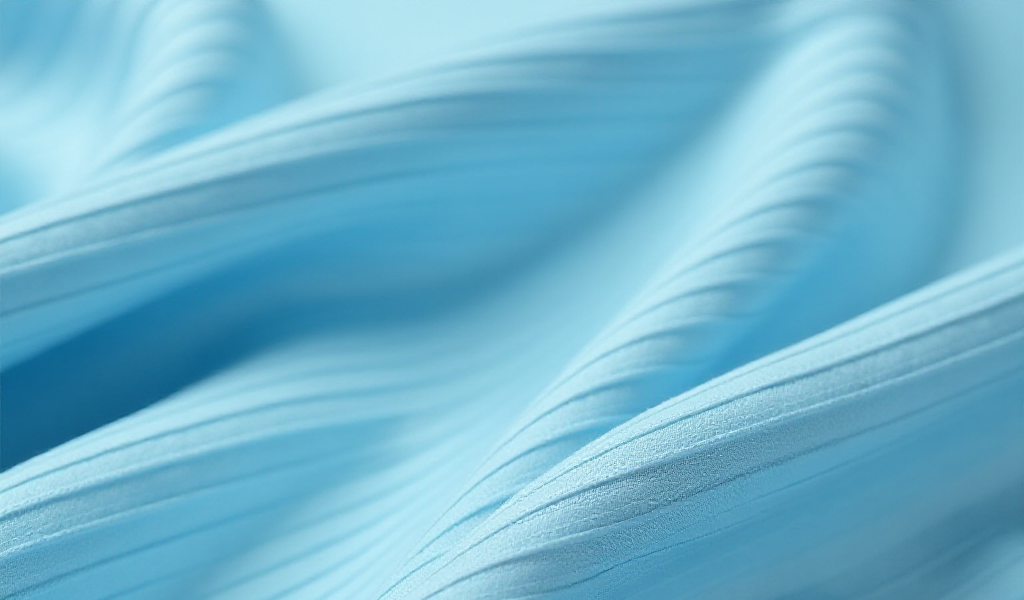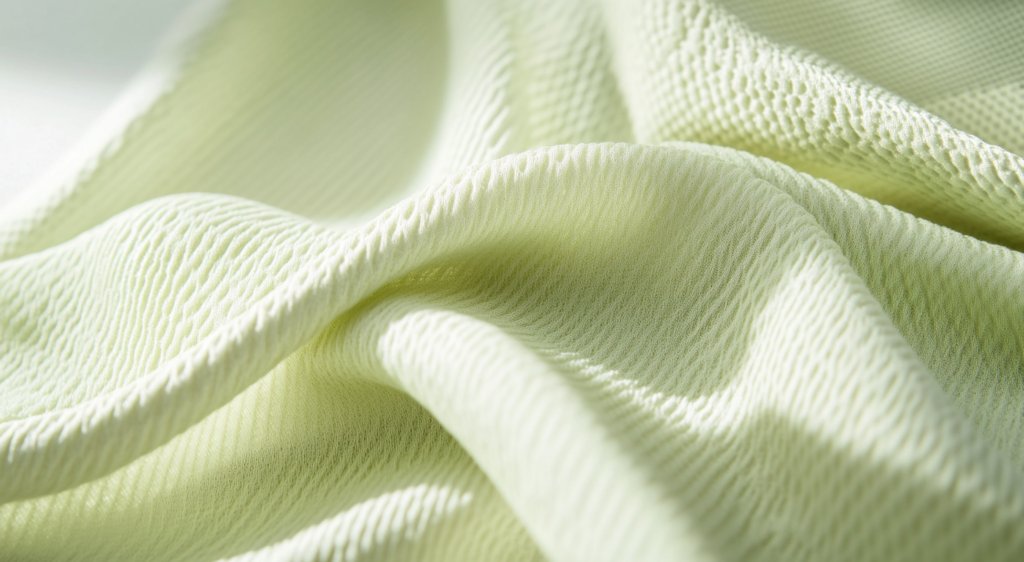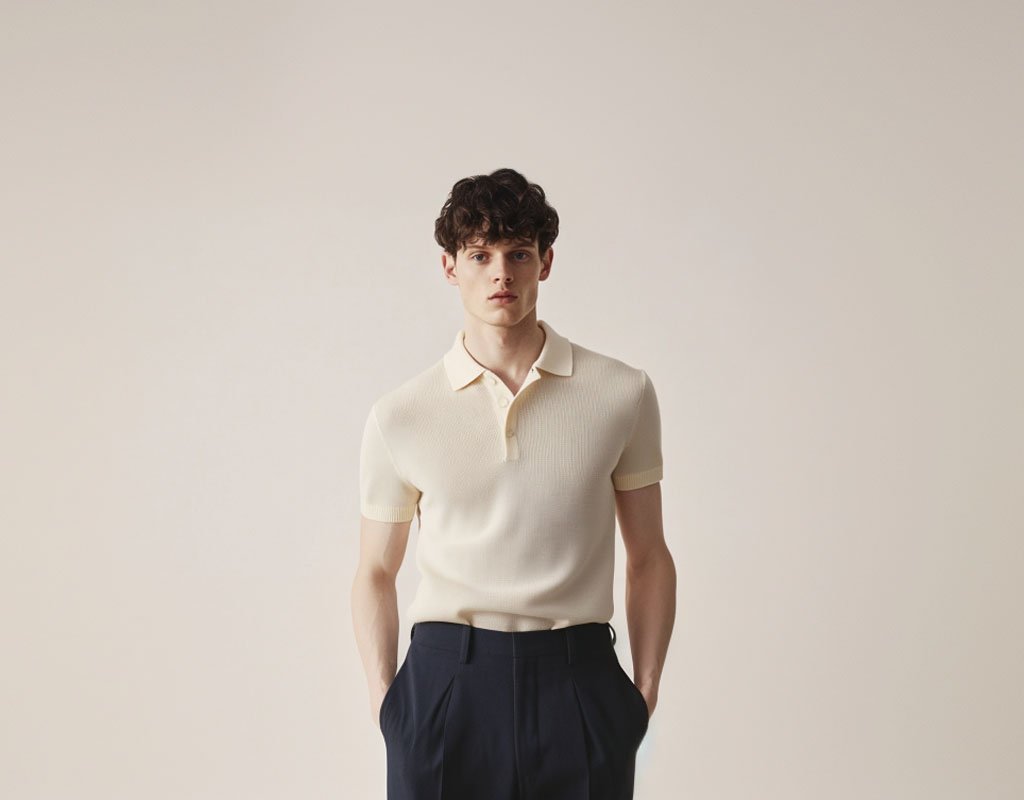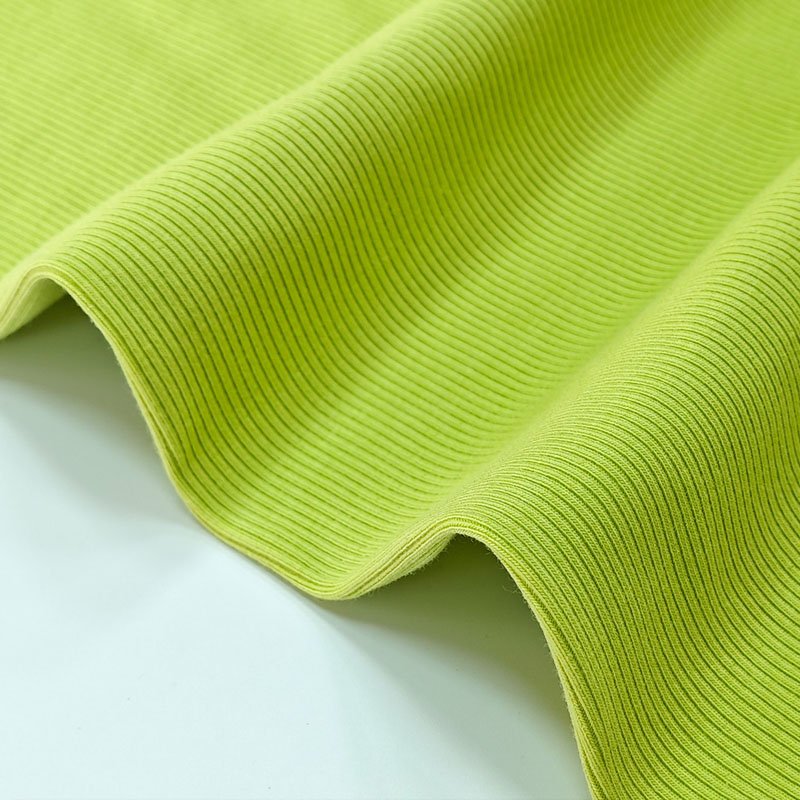The journey of spandex and Lycra is a testament to mid-20th-century advancements in textile technology, blending innovation with functionality. From groundbreaking research on polyurethane to Joseph Shivers’s invention of Lycra, these materials revolutionized clothing by introducing unprecedented elasticity and comfort, transforming fashion and sports forever.
In 1958, chemist Joseph Shivers of DuPont developed Lycra as a synthetic alternative to rubber. Initially known as “K-fiber,” Lycra’s ability to stretch up to five times its length without losing shape revolutionized garment design. Launched commercially in 1962, it rapidly gained popularity in swimwear, corsets, and athletic apparel, paving the way for modern, form-fitting styles.
The introduction of Lycra redefined fashion aesthetics and profoundly impacted athletic performance. Its debut on the world stage during the 1968 Winter Olympics showcased its versatility and durability, making it a preferred material for sportswear. This marked a turning point where innovation in textiles began to influence performance and style directly.
The invention and evolution of spandex and Lycra represent a milestone in the textile industry. They enable a perfect balance of comfort, durability, and design flexibility. Their influence spans decades, shaping modern fashion and sportswear while continuing to inspire innovations in functional fabrics today.
Lycra was invented by Joseph Shivers in 1958 and first marketed in 1962, revolutionizing clothing design with its exceptional stretch and elasticity – True
Lycra was first introduced as a material exclusively for Olympic athletes, later adapted for everyday fashion and swimwear – False

1. What are the Technical Differences between spandex and lycra?
The technical distinctions between spandex and Lycra lie in branding, production methods, and innovations in sustainable materials. While both share a foundation of high elasticity, Lycra has established itself as a premium brand with unique enhancements and eco-friendly advancements that set it apart from generic spandex.
Spandex is a generic term for elastic fibers, while Lycra is a trademarked brand known for its quality and consistency. Lycra’s manufacturing processes often incorporate proprietary techniques to enhance durability and elasticity recovery, ensuring superior performance in athletic apparel and intimate wear applications.
Recent innovations in sustainable materials have further differentiated Lycra from generic spandex. The Lycra Company has introduced eco-conscious products, such as Lycra EcoMade, which uses recycled raw materials and reduces environmental impact. These advancements meet consumer demand for sustainable fashion and highlight how branding and technical innovation can elevate a product beyond its generic counterparts.
Terminology
- Spandex: Spandex is the generic term commonly used in the United States for a type of elastic fiber. Internationally, it is also referred to as elastane.
- Lycra: Lycra is a trademarked brand of spandex developed by the DuPont Company. While both terms describe the same type of fiber, Lycra is often associated with higher quality due to its specific formulations and innovations introduced by DuPont.
Manufacturing Quality
- Lycra fibers undergo specialized manufacturing processes that enhance their performance, such as:
- Durability: Increased longevity of the fiber even with frequent use.
- Stretch Recovery: Improved ability to return to its original shape after stretching.
- Color Retention: Lycra products like Lycra Black address common issues with standard spandex. For example, Lycra Black maintains color integrity even when stretched, avoiding the white appearance that can occur with standard spandex fibers.
Conclusion
While spandex and Lycra refer to the same elastic fiber type, Lycra stands out due to its advanced manufacturing processes, sustainability initiatives, and cutting-edge technologies. These innovations position Lycra as a leader in developing high-performance fabrics, catering to the demands of modern apparel industries.
Lycra is a trademarked brand of spandex known for its proprietary innovations, such as LYCRA® FitSense™ and bio-derived spandex, which enhance performance and sustainability – True
Lycra and spandex are completely different fibers, with Lycra being a superior and entirely distinct material compared to standard spandex – False

2. What is the Sustainability and Environmental Impact between spandex and lycra?
The sustainability and environmental impact of spandex and Lycra have become important considerations in the textile industry, especially as eco-friendly practices continue to gain traction. Both materials are derived from synthetic fibers and share common challenges, but recent developments—especially those by the Lycra brand—are introducing more sustainable production methods.
Spandex and Lycra, both made from polyurethane-based fibers, face concerns due to their reliance on non-renewable resources. However, The Lycra Company has been progressing in addressing these concerns by developing bio-derived fibers and recycling initiatives designed to reduce carbon emissions and waste.
Lycra has taken significant steps to lead sustainability efforts within the textile industry. Its bio-derived spandex, developed in collaboration with Qore, utilizes renewable resources like corn instead of traditional petroleum-based raw materials. The company has also launched initiatives like Lycra EcoMade, incorporating recycled content into its production process. These efforts reduce the environmental impact while maintaining the high-quality, high-performance standards associated with Lycra products, setting an example for sustainable practices in the industry.
1. Resource Dependency
Both spandex and Lycra are derived from petroleum-based resources, which are non-renewable. The production of these synthetic fibers requires significant amounts of oil. For example, it is estimated that the production of synthetic fabrics, including spandex, accounts for about 1.35% of the world’s oil consumption. This reliance on fossil fuels contributes to resource depletion and environmental degradation, particularly related to the extraction and processing of petroleum.
2. Energy Consumption
The manufacturing processes for both spandex and Lycra are energy-intensive, leading to substantial carbon emissions. The high energy demand associated with these processes exacerbates climate change, especially when fossil fuels are the primary energy source in production facilities.
3. Pollution
The production of spandex and Lycra also involves chemicals that can result in air and water pollution. Toxic substances used in dyeing and finishing processes may contaminate water systems, posing risks to aquatic life. Furthermore, garments made from these fibers shed microplastics during washing, entering water systems and harming marine ecosystems.
4. Innovations in Sustainability
- Recycled Materials: The Lycra Company has introduced several eco-friendly innovations to reduce environmental impact:
- LYCRA® EcoMade: This product incorporates 20% pre-consumer spandex manufacturing waste while maintaining performance comparable to virgin Lycra.
- LYCRA® T400® EcoMade: A bi-component polyester fiber made with 50% recycled PET bottles and 18% renewable plant-based materials, such as corn-derived dextrose.
- Bio-Derived Spandex: The Lycra Company has developed bio-derived spandex from renewable resources like corn. This new fiber aims to reduce petroleum dependence, marking a significant step towards sustainability in textile production.
- Focus on Recycling: Recycling spandex is challenging due to its common use in blends with other fibers. However, brands like Patagonia are working on pre-consumer recycled spandex to divert waste from landfills while maintaining the performance standards of the fabric.
| Aspect | Spandex | Lycra |
| Resource Dependency | Derived from petroleum-based resources, contributing to fossil fuel depletion. | Also derived from petroleum-based resources, but has introduced bio-derived spandex to reduce petroleum dependency. |
| Energy Consumption | Manufacturing is energy-intensive, leading to carbon emissions. | Manufacturing is also energy-intensive, but Lycra has implemented innovations to reduce energy use and emissions. |
| Pollution | Chemicals used in production can pollute air and water, and garments shed microplastics. | Same as spandex in terms of production pollution, but Lycra has focused on recycling and eco-friendly fibers. |
| Sustainability Innovations | Limited sustainability efforts; challenges in recycling due to blending with other fibers. | Introduced eco-friendly innovations such as LYCRA® EcoMade, LYCRA® T400® EcoMade, and bio-derived spandex. |
| Recycling Efforts | Recycling of spandex is challenging due to fiber blends, with limited progress in recycling. | Ongoing efforts to improve recycling methods, with brands like Patagonia using pre-consumer recycled spandex. |
| Bio-Derived Materials | No significant bio-derived material advancements. | Lycra has developed bio-derived spandex made from renewable resources like corn. |
Conclusion
The sustainability of spandex and Lycra is a complex issue, largely due to their environmental impact from fossil fuel dependency and chemical pollution. However, innovations, particularly those led by the Lycra brand, are advancing more sustainable practices in the textile industry. The development of recycled materials and bio-derived fibers shows a positive trend toward reducing the ecological footprint of these widely used textiles. As consumer demand for sustainable options increases, further advancements in this field are expected.
Lycra has developed bio-derived spandex made from renewable resources like corn, reducing its reliance on petroleum – True
Spandex and Lycra are both made from 100% renewable resources—this is not accurate as both rely on petroleum-based raw materials, although Lycra is making efforts to reduce its petroleum dependency – False

3. What are the Application Areas and Product Recommendations between spandex and lycra?
The application areas for spandex and Lycra are vast, showcasing their remarkable versatility across different industries. Both materials are celebrated for their exceptional elasticity, comfort, and durability, which make them ideal choices for a broad spectrum of products. From activewear to medical textiles, the uses of spandex and Lycra have continued to expand as their unique properties are leveraged in innovative ways.
Spandex and Lycra are commonly used in apparel, especially in activewear, swimwear, and intimate garments. Their ability to stretch and recover makes them perfect for products that require flexibility and a comfortable fit. Additionally, these fibers are used in specialty textiles, including performance sportswear, compression garments, and medical products, where their elasticity and breathability provide functional benefits.
The versatility of spandex and Lycra extends beyond fashion and sportswear. In the medical field, these materials are used in compression garments that help with blood circulation and recovery. In the realm of performance sportswear, Lycra has become synonymous with high-quality athletic gear, providing support and comfort during physical activity. Moreover, the use of spandex and Lycra in textiles for medical devices, such as braces and orthotic supports, has gained popularity due to their ability to conform to body shapes while allowing for ease of movement. Thanks to their durability and stretch capabilities, both materials are also utilized in industrial applications, including automotive and furniture fabrics.
Application Areas
- Apparel
- Activewear: Both spandex and Lycra are commonly used in athletic clothing, such as yoga pants, running tights, and sports bras. Their stretchability ensures a snug fit while allowing for maximum movement and comfort.
- Swimwear: Lycra is a preferred material for swimwear due to its resistance to chlorine and saltwater, which ensures longevity and shape retention even after frequent exposure to these elements.
- Shapewear: Compression garments made from spandex or Lycra are used in lingerie and shapewear for their body-shaping qualities while providing comfort.
- Everyday Fashion
- Denim: Lycra is often blended with cotton to create stretch jeans, improving fit and comfort. This blend allows jeans to better conform to the body while offering freedom of movement.
- Casual Wear: Spandex or Lycra is incorporated into everyday clothing such as T-shirts, dresses, and skirts for added comfort, flexibility, and improved fit.
- Medical Applications Spandex is utilized in various medical products like compression garments, elastic bandages, and support braces. These products benefit from spandex’s ability to offer firm support and compression, aiding in recovery and injury prevention.
- Footwear Both spandex and Lycra are used in footwear for their smooth texture and flexibility, contributing to a comfortable and adaptive fit that moves with the foot.
- Specialty Uses
- Automotive Industry: For its stretchability and aesthetic qualities, Spandex is employed in car interiors, such as seat covers and door panels.
- Performance Costumes: Both materials are popular in dancewear and performance costumes, where their flexibility and form-fitting characteristics are essential for movement and style.
Product Recommendations
- For Activewear:
- Lycra® Active Eco Fabric: A lightweight polyester blend, ideal for activewear with excellent stretch properties.
- Heavy Lycra Fabric: Suitable for leggings and activewear that require durability and high stretch recovery.
- For Swimwear:
- LYCRA® XTRA LIFE™ Fiber: Specially designed for swimwear, offering resistance to chlorine and UV rays while maintaining shape over time.
- For Everyday Fashion:
- Organic Jasmine Lycra Jersey: A medium-weight organic cotton blend, perfect for kids’ clothing, leggings, and T-shirts.
- Poppy Lycra Jersey: A soft, medium-weight fabric ideal for casual wear like T-shirts and dresses.
- For Medical Applications: Compression garments made from a blend of spandex or Lycra are available in medical supply stores, offering firm support and comfort for recovery and injury prevention.
| Application Area | Spandex | Lycra | Key Benefits |
| Stretch and Flexibility | High stretchability for a snug fit and comfort in tight-fitting garments. | Superior stretch and recovery, ensuring garments maintain their shape over time. | Provides comfort, adaptability, and freedom of movement. |
| Longevity and Durability | May show wear after extended use, especially in swimwear. | Enhanced durability, especially in swimwear, resisting chlorine and saltwater damage. | Lycra is preferred in applications requiring long-term performance. |
| Breathability and Comfort | Good breathability and moisture-wicking properties. | Excellent moisture management and breathability, ideal for activewear. | Both materials ensure a high level of comfort for the wearer. |
| Shape Retention | Retains shape moderately after repeated wear. | Maintains its shape even under stress, such as in swimwear and activewear. | Lycra’s superior recovery ensures garments maintain their form. |
| Environmental Impact | Primarily made from petroleum-based materials, limited sustainability efforts. | Innovations in bio-derived fibers and recycling, with a focus on sustainability. | Lycra leads in eco-friendly innovations, reducing reliance on petroleum. |
| Industry Use | Widely used in medical, activewear, and casual clothing. | Common in high-performance activewear, swimwear, and fashion. | Lycra is often the material of choice for premium, high-performance products. |
Both spandex and Lycra are commonly used in activewear, swimwear, shapewear, and medical garments due to their stretchability, comfort, and durability – True
Lycra and spandex are only used in fashion and are not applicable in medical or industrial fields – False

4. What are the Consumer Perceptions and Misconceptions?
Consumer perception of spandex and Lycra is significant in their popularity and widespread use across different industries. Factors such as brand reputation, product performance, and common misconceptions about these materials influence how consumers view spandex and Lycra. While both materials are known for their exceptional elasticity and comfort, the way consumers perceive them can differ based on their experiences, marketing, and understanding of the materials’ characteristics.
Lycra, as a branded product, often carries a perception of higher quality due to its association with innovation and performance, especially in the sports and fashion sectors. As the generic term, Spandex may not evoke the same premium image, even though it shares many of the same properties. Additionally, consumers may be unaware of the differences between the two or assume they are interchangeable, which can lead to misconceptions about their durability, stretch, and environmental impact.
The distinction between spandex and Lycra is often subtle for consumers, with many viewing them as identical materials. However, brand loyalty and the associations built around Lycra’s advanced technological features, such as durability and performance in swimwear or athletic apparel, influence consumer preference. Furthermore, there are common misconceptions that Lycra is inherently superior to spandex despite both being made from similar elastic fibers. Environmental concerns are also shaping consumer perception, as more consumers are drawn to the sustainability initiatives pioneered by Lycra, like bio-derived and recycled fibers. As awareness grows, these elements will continue to impact consumer choices in the textile market.
Consumer Perception of Lycra and Spandex
Brand Recognition Lycra is a well-established brand renowned for its innovation and high quality in stretch fabrics. The LYCRA brand is widely recognized for its durability, comfort, and advanced technological features, which build consumer trust and preference. Many consumers associate Lycra with superior performance and specialized applications, often perceiving it as a higher-quality option than generic spandex.
Quality Expectations Consumers generally expect higher prices to correspond with better quality, especially for garments made with Lycra. This expectation is based on Lycra’s reputation for enhanced durability, shape retention, and comfort compared to standard spandex. As a result, consumers are more likely to choose LYCRA-labeled products over generic alternatives, influenced by the perception of superior quality.
Common Misconceptions
Stretch and Recovery A common misconception is that Lycra is inherently stretchier than regular spandex. However, both materials share similar stretch capabilities, with Lycra’s branding highlighting specific sub-categories optimized for different applications. The perception that Lycra is more flexible is often exaggerated due to its association with premium performance.
Breathability Some consumers mistakenly believe that Lycra fabrics are suffocating or uncomfortable due to the assumption that synthetic fibers cannot be breathable. Modern Lycra blends are often combined with breathable materials like cotton or polyester, making them suitable for active use and warmer climates.
Environmental Impact Lycra is sometimes viewed negatively due to concerns about its environmental sustainability, given the criticism of traditional spandex as non-biodegradable. However, advancements such as bio-derived spandex are being developed within the Lycra brand to reduce environmental impact, though many consumers remain unaware of these innovations.
Care and Maintenance Another misconception is that Lycra garments are prone to shrinking or losing their shape over time. High-quality Lycra is designed to maintain its elasticity and shape through multiple washes, alleviating concerns about garment longevity and maintenance.
Lycra is blended with breathable materials for comfort, especially in activewear – True
Lycra is more stretchy than regular spandex—both Lycra and spandex have similar stretch capabilities – False

Conclusion
Consumer perception of spandex and Lycra is crucial in their widespread use and market positioning. While both materials share similar properties, the distinction often lies in brand recognition. Lycra is associated with higher quality due to its branding, advanced technologies, and performance in specialized applications like athletic wear and swimwear. However, common misconceptions about their stretch, breathability, environmental impact, and durability can influence purchasing decisions.
Lycra’s reputation for innovation and sustainability efforts, such as bio-derived fibers, contributes to its perceived premium status. At the same time, spandex, while equally functional, is often seen as a more generic option. As consumers become more aware of the environmental impact of textile production, particularly in relation to sustainability initiatives, their preferences may shift toward brands like Lycra that prioritize eco-friendly innovations.
To further improve consumer understanding, clearer communication and education on the similarities and differences between spandex and Lycra—particularly in terms of their stretch capabilities, durability, and environmental benefits—will be key in shaping future consumer choices in the textile market.



